The National Science and Media Museum collections contain so many pieces of film, photography, and TV kit that it’s easy to overlook individual objects that don’t immediately catch your eye when you walk by them in the stores. At first glance, Herbert Ponting’s Prestwich Model 5 Kinema Camera looks like any of the other early cine cameras in the collection—a wooden box with metal fittings. There’s nothing about it on the surface to suggest its storied past. Only by digging a little deeper can we reveal the object’s true historical significance. And what a story this particular wooden box has to tell.
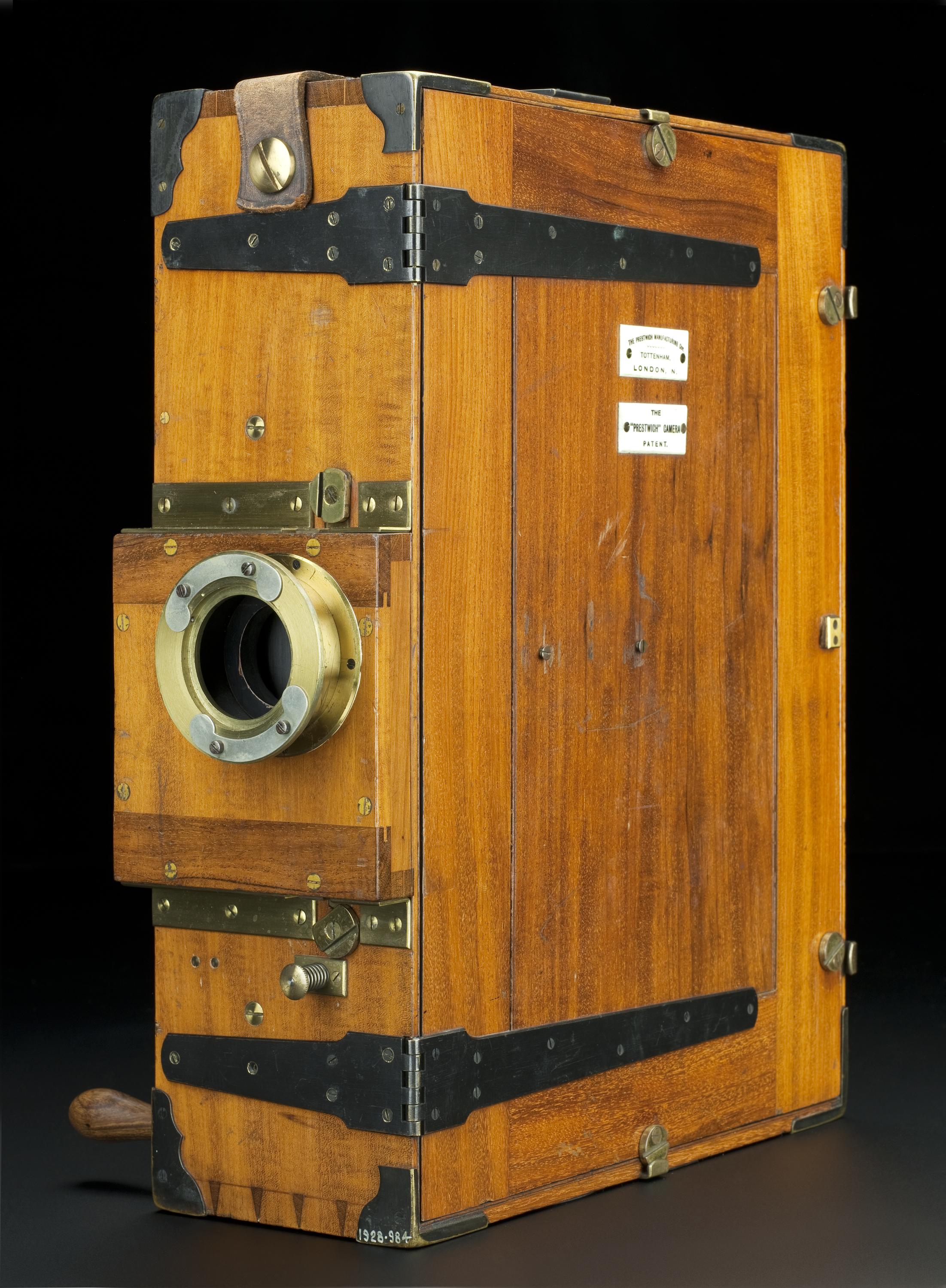
Falling at the tail end of the ‘Heroic Age of Polar Exploration’, the 1910–1913 British Antarctic Expedition captured the public imagination. It began with excitement and promise; it ended in national mourning for Captain Robert Falcon Scott and four of his colleagues who perished in the frozen wilderness. The fact that they failed to claim the South Pole for Britain, coming in second to Roald Amundsen of Norway, only compounded the sense of grief.
No one did more to preserve Scott’s legend in the years following the explorer’s death than the expedition’s official ‘Camera Artist’ (photographer and cinematographer) Herbert G. Ponting.
A member of the Royal Geographical and Royal Photographic Societies, Ponting took still images of the Antarctic landscape and of the Terra Nova crew at work which have stood the test of time, continuing to fascinate as both artistic and scientific documents. But it was Ponting’s work as a cinematographer that made the biggest impact in the years following Scott’s death.

Among the many cine cameras in the National Science and Media Museum collection is a Prestwich Model 5 Kinema Camera, one of two cine cameras used by Ponting during the Antarctic Expedition (the other was a Newman Sinclair). Prestwich bought the camera back from Ponting when the photographer returned to England in late 1912, and in August 1928 presented it to the South Kensington Museum in London.
Founded in 1857, the South Kensington Museum incorporated the collection of the Royal Society of Arts and objects from the Great Exhibition of 1851. The collections subsequently separated in 1885 to become the Science Museum and the V&A. When the National Science and Media Museum opened in 1983 as the National Museum of Photography, Film & Television, Ponting’s camera was one of the objects sent up to Bradford from London.
Much has been written about Ponting’s devotion to sharing moving images of the expedition. He believed that motion pictures were the pinnacle of photographic potential. “The Kinematograph, properly applied”, he said, “is the greatest educational contrivance ever conceived by the mind of man”[i]. There were five documentary iterations of the Terra Nova story, all using Ponting’s footage.
But what of the process of making these films? How was Ponting able to capture his footage with what today would be considered rather primitive equipment?
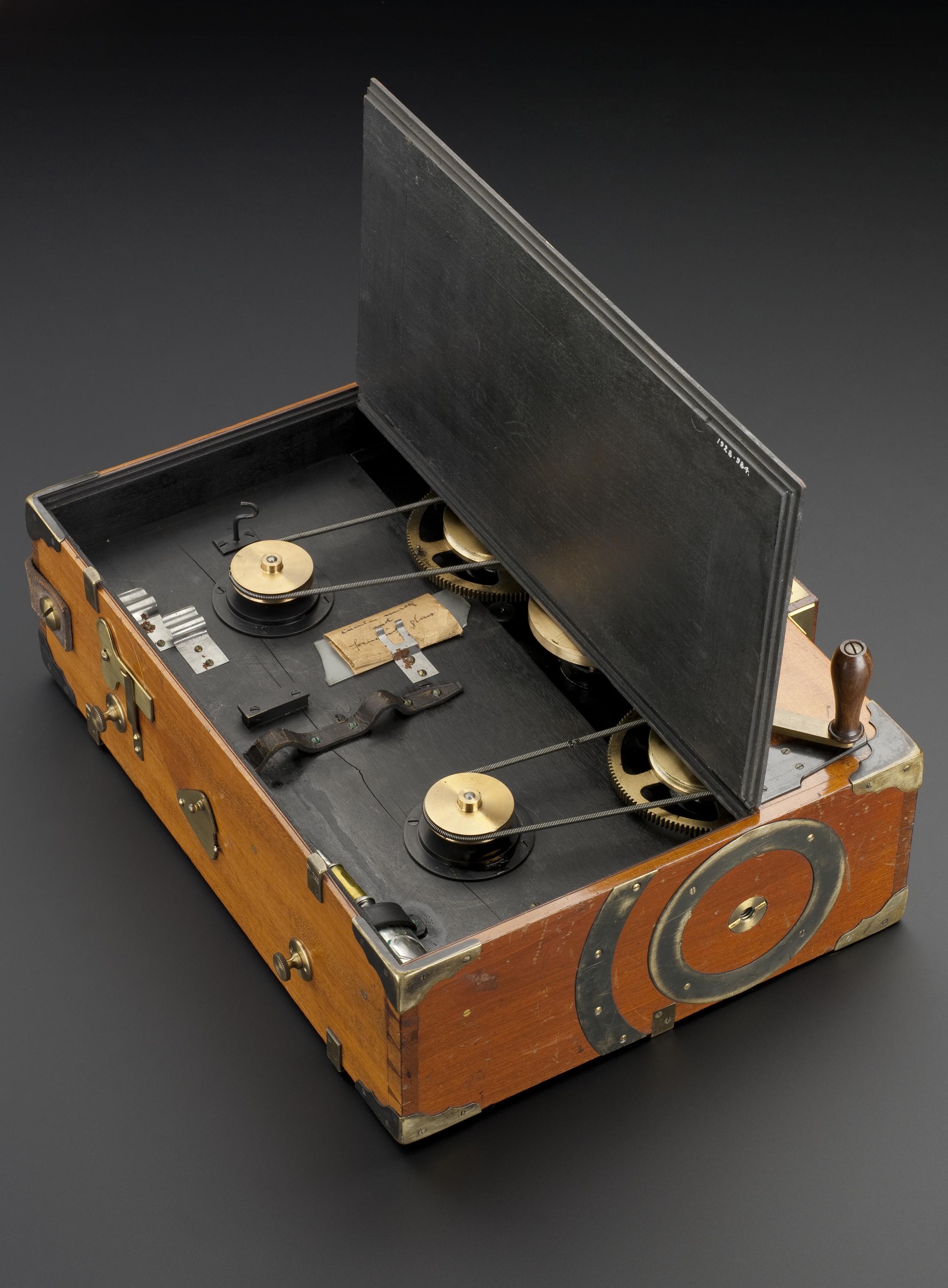
Sub-zero temperatures have long presented challenges for cinematographers. In a 2012 article about the making of the Frozen Planet series, Discovery Channel producer Mark Linfield described testing the crew’s equipment in a walk-in freezer before departing for the Pole:
“We discovered that lots of our cables for attaching monitors to cameras would go stiff and snap, and the LCD screens would go pale—you just couldn’t see anything. And things with oil-based lubricants would stiffen so much you couldn’t pan the tripod head. We replaced the cables with what’s called Arctic cabling, which remains flexible at low temperatures, and we sourced monitors that we knew wouldn’t let us down in the field.”[ii]
In 1910 Ponting did not have the knowledge or expertise that has been built up over a century of cinematic practice. But he was by that time well known as a freelance photographer, travelling extensively in Asia and submitting photographs to Harper’s, Cosmopolitan, and Strand magazine, among other publications. His skill with a still camera led him to be recommended for the Terra Nova expedition by dog handler Cecil Mears, and it was Scott himself who suggested that Ponting add a cine camera to his expedition kit. Indeed, Scott anticipated the thrill that audiences would experience when viewing footage of the expedition in a crowded cinema. They were not “storing up experience” for themselves, “but for all mankind.”[iii]
Perhaps the relative simplicity of the Prestwich Kinema Camera worked to Ponting’s advantage during this adventure. Priced at £36 and weighing 18lbs, the Model 5 was affordable, sturdy and, most importantly, easy to use.
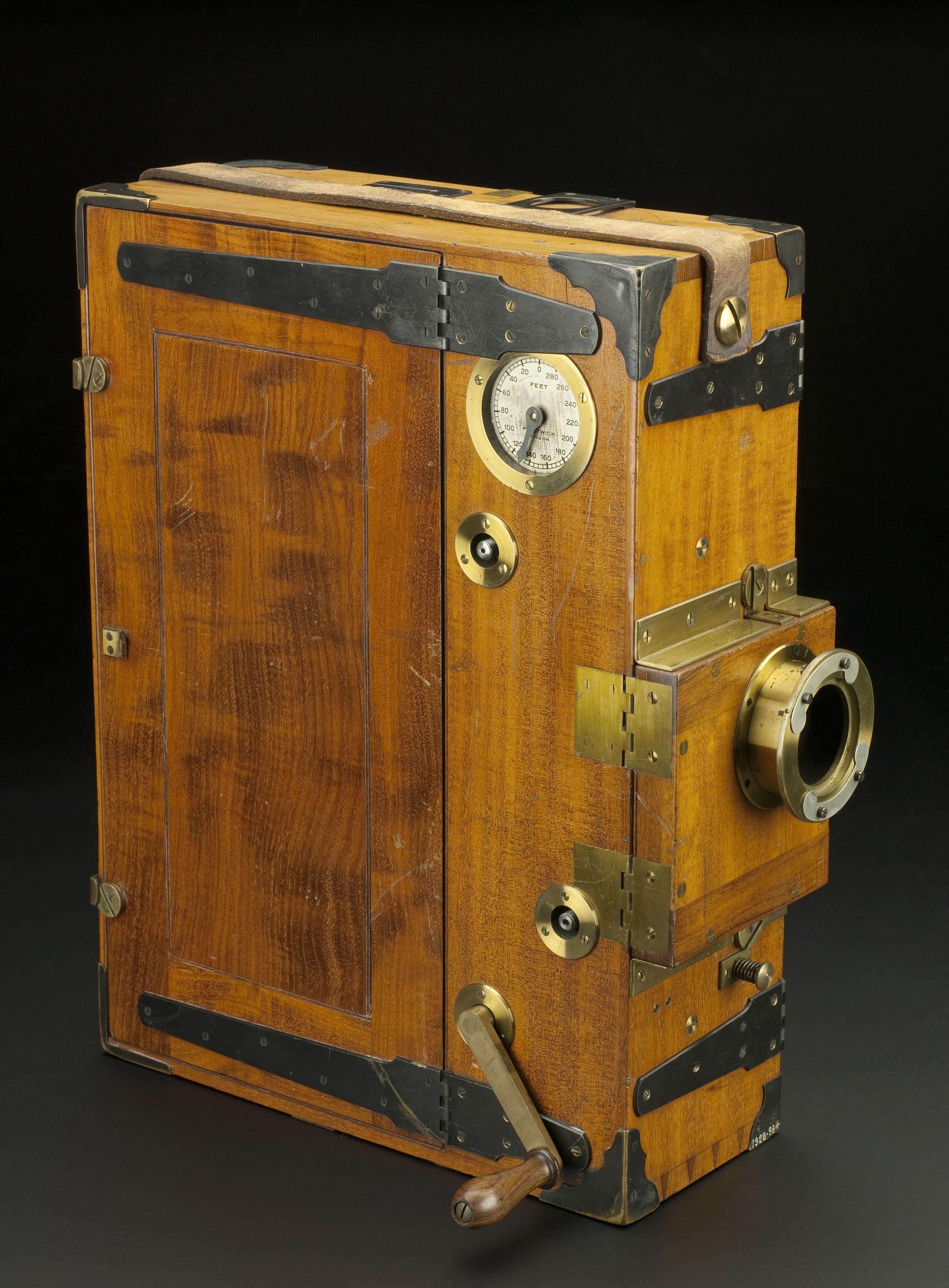
35mm film spools were enclosed in two detachable cases that fit above and below the view finder within the wood camera body. Each case had a sliding cut-off door to allow the film to be loaded in daylight. The film was fed through the upper spool and passed over a roller attached to a fixed spindle. An upper sprocket drum fitted with fins engaged the perforations. The film was held down by grip rollers and, after forming a loop, was passed through the gate and held still momentarily for exposure. It then passed through another set of fins and continuously pulled forward the depth of one picture and wound around the receiving spool.
Operated via a hand-crank, the camera could process up to 350 feet of film at one time. It was well suited to the task, and Ponting kept it in rotation with his Newman Sinclair camera.
Although he didn’t have to deal with faded LDC screens, frozen cables, or dead batteries, Ponting still faced technical challenges in such an extreme environment. “Compared with polar photography, everything is easy,” he told Scientific American in 1913. “It is not only the difficulty of the light. That is soon mastered. The temperature is where the real trouble came in. If you take your glove off and put your naked hand near the lens, instantly the lens is covered with a film of ice that no mere rubbing will remove.”[iv]
Moisture inside the camera lens could ruin a day’s work before it even got started. And then there was the risk of frostbite:
“A grave danger anent the camera is the brass knobs. If by accident, you touch with your bare hand the brass apparatus, it will burn you just like a red-hot iron. On one occasion I was focusing under my cloth when I happened to moisten my lips. The point of my tongue came in contact with the metal and instantly froze there: the shock was so great that I went over backward, and when I recovered, I found I had lost the tip of my tongue, which remained frozen to the camera.”[v]
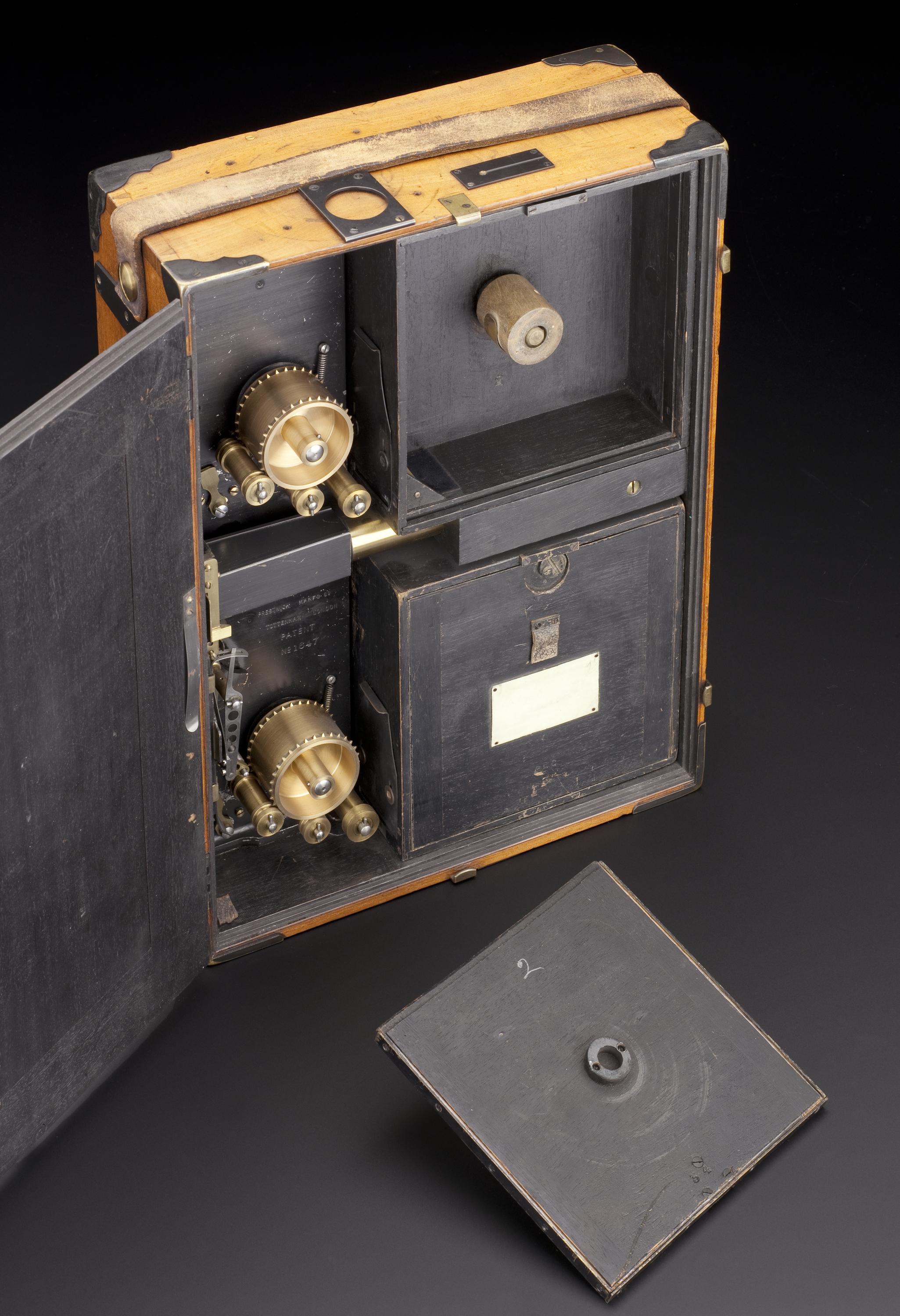
Ponting’s assignment was to capture the wildlife and scenery, as well as the expedition party’s day-to-day routine, in the name of science. He was a patient but audacious cameraman. As a documentarian,he was “interested in the natural world, not in an invented one.”[vi] However, this directorial preference didn’t prevent him from infusing his stories of the expedition with dramatic narrative flair.
Ponting later spoke of danger lurking around every corner and how he put himself in harm’s way to get the perfect shot. In order to capture the bow of the Terra Nova breaking through the ice pack, for example, Ponting enlisted his colleagues to build a wood plank that extended out over the side of the ship from which he was suspended while operating his cine camera.
Recording people was relatively easy. His colleagues were happy to take directions and the team’s motor-driven sleds provided an adequate dolly from which to film tracking shots. Animals proved much more difficult. Attacks by skua-gulls nearly blinded him. A seal weighing half a ton charged and bit him on the leg, but he maintained that he “certainly invited it, and probably got what I deserved”. His most famous story involved being surrounded and nearly killed by a pod of orcas who gave up their chase of seals and closed in on the curious cameraman instead:
“None of us were familiar with the ferocious killer-whales, and so when we spotted a large school of them after seals, I disembarked and hastened over the ice to film the thrilling scene […] Over a dozen of them formed into a line, and diving under the ice, heaved their backs against the ice, breaking it up for hundreds of yards, and it was all that I could do, with the assistance of my comrades, to regain the safety of firm ice again with a school of vicious whales exerting their every effort to get me into the water.”[vii]
During the two years Ponting spent in the Antarctic he recorded approximately 25,000 feet of film, including a parting shot of Scott and Dr Edward Wilson walking out onto the vast polar plateau during the final leg of their journey. “What fun it will be when we’re home again and see this at the cinema,” Scott had said[viii].
Scott and Wilson never made it home to witness the reaction to Ponting’s films. They, along with Captain Lawrence Oats, Petty Officer Evans, and Lieutenant Henry Robertson Bowers, died out on the ice, a mere eleven miles from their next cache of food.
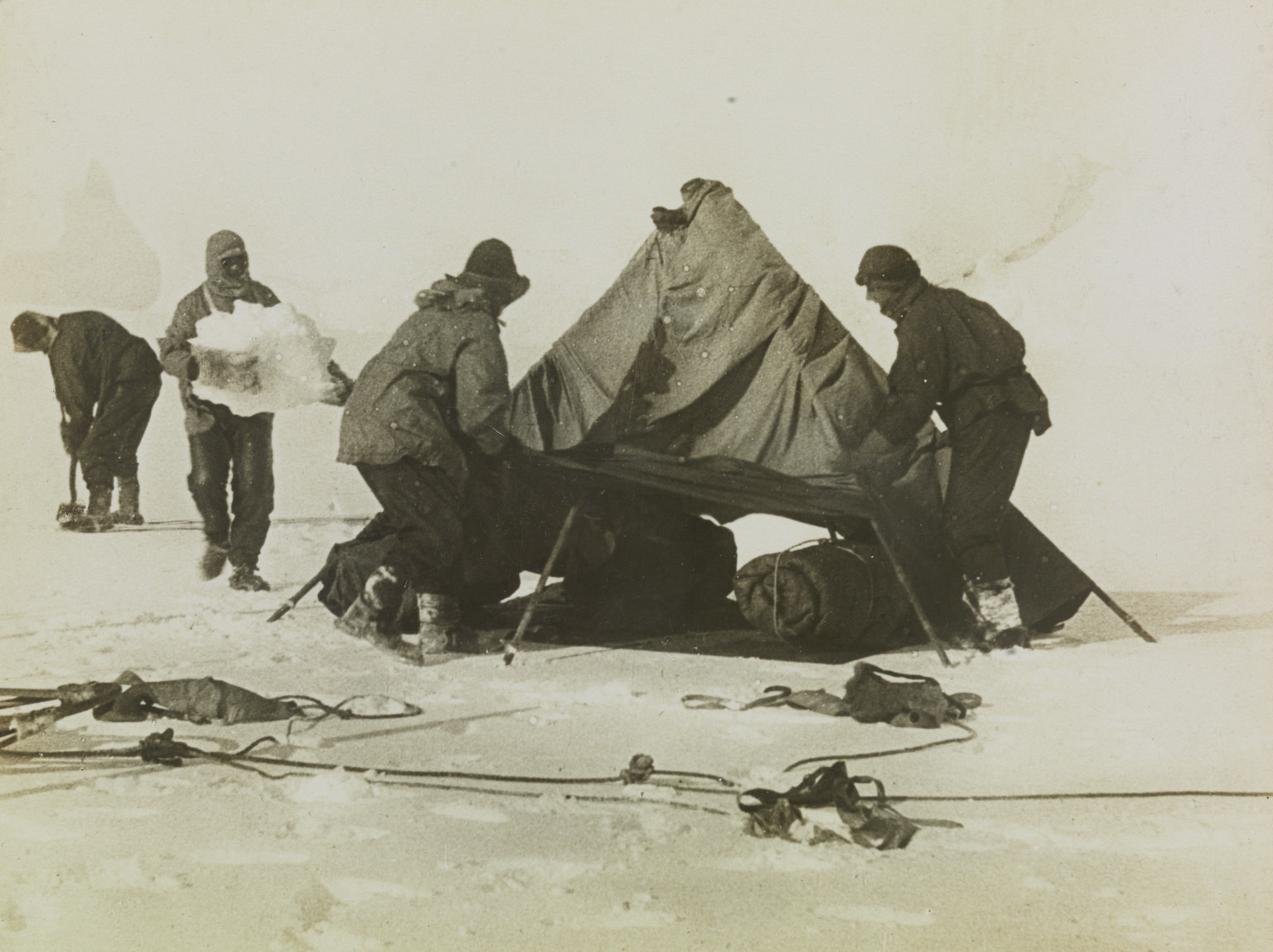
When the news of Scott’s tragic demise reached England, Ponting took it upon himself to become the arbiter of the explorer’s story. He bought back rights to footage that had been sold to Gaumont early in the expedition and spliced it together with still images from the Kodak camera that was found with Scott’s body. The result was a wildly successful 1914 ‘moving picture lecture’ titled With Captain Scott in the Antarctic that ran for ten consecutive months at the at the Philharmonic Hall in Great Portland Street. It was advertised as a “Complete Cinematographic Diary…of the Greatest Adventure of Modern Times’.
Ponting personally hired out the event space and arranged for a live piano player. He also provided commentary on stage twice a day. During the ensuing years and the beginning of the First World War, the film provided a great morale boost for the British public, but the 1917 revival failed to draw an audience. As scholar Jeremy Murray-Brown explains, “The public’s taste had changed. Too shocked by the terrible losses of men killed in the trenches across the Channel the nation no longer found inspiration in Scott’s fate.”[ix]
Still, Ponting was undeterred. In 1921 he published a photography book titled The Great White South, and three years later reissued his film as The Great White Silence, using inter-title cards to replace his in-person narration. In 1933, when cinema was making the transition from silent to sound, Ponting recorded a commentary track and rereleased his film once more as a talkie titled 90⁰ South.
Viewing this final film, one gets a sense of the pride Ponting felt, not only for his work as a photography and cinema practitioner, but of the gallantry of the expedition party, which by the 1930s seemed to represent a bygone era. Ponting died in 1935, having spent more than two decades of his professional life devoted to the memory of Captain Robert Falcon Scott.
https://www.youtube.com/watch?v=zi7DIMVjZjk
[i] Dennis Lynch, “The Worst Location in the World: Herbert G. Ponting in the Antarctic, 1910–1912”, Film History, Vol. 3, No. 4 (1989), pp. 291–306.
[ii] Erin McCarthy, “The Five Biggest Challenges of Filming Discovery Channel’s Frozen Planet”. Popular Mechanics, March 15, 2012
[iii] Lynch, 292.
[iv] “The South Pole with the Cinematograph”, Scientific American, Vol. 108, No. 25 (June 21, 1913), pp. 560–561, 568–569.
[v] Ibid.
[vi] Jeremy Murray-Brown, “Herbert Ponting and the First Documentary”, Boston University, March 30, 2012.
[vii] “The South Pole with the Cinematograph.”
[viii] 90⁰ South (Herbert Ponting, 1933).
[ix] Murray-Brown, pp. 7.
Thank you so much for this article! I wrote an essay that touched on some technical aspects of “The Great White Silence”, and I specifically needed to know the model and weight of Ponting’s camera. I was expecting this to be a brief data sheet of the camera, but it proved so much more, which pointed my investigation in the right way. Cheers!
Wonderful to hear of your research on The Great White Silence, dvx! Thanks for the comment!